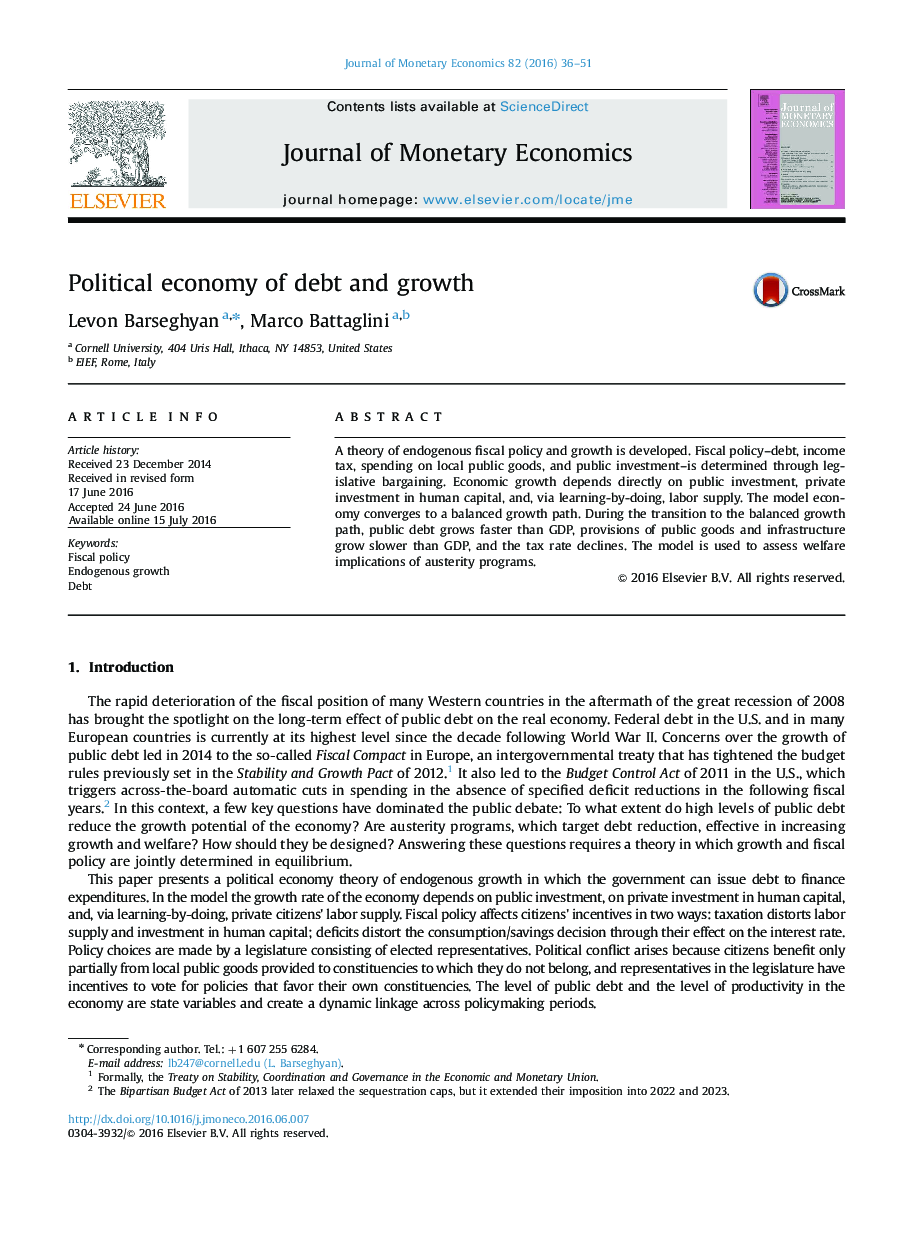| Article ID | Journal | Published Year | Pages | File Type |
|---|---|---|---|---|
| 967520 | Journal of Monetary Economics | 2016 | 16 Pages |
Abstract
A theory of endogenous fiscal policy and growth is developed. Fiscal policy-debt, income tax, spending on local public goods, and public investment-is determined through legislative bargaining. Economic growth depends directly on public investment, private investment in human capital, and, via learning-by-doing, labor supply. The model economy converges to a balanced growth path. During the transition to the balanced growth path, public debt grows faster than GDP, provisions of public goods and infrastructure grow slower than GDP, and the tax rate declines. The model is used to assess welfare implications of austerity programs.
Keywords
Related Topics
Social Sciences and Humanities
Economics, Econometrics and Finance
Economics and Econometrics
Authors
Levon Barseghyan, Marco Battaglini,
